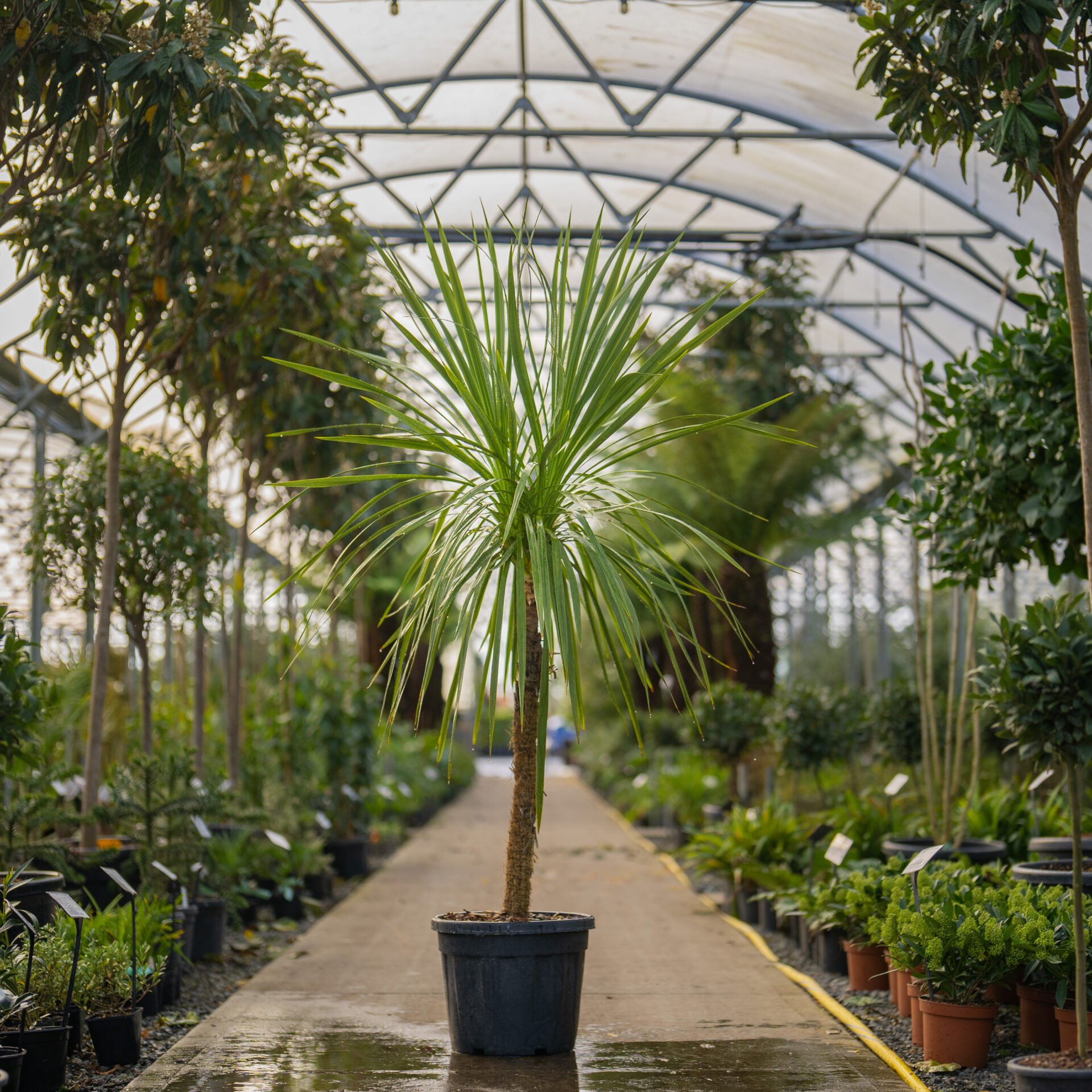Table of Contents
Cordylines are strikingly beautiful, variegated, and multi-coloured and can make any house look good. They are also quite easy to grow and do not need too much maintenance. They do not even need pruning and retain their shape quite well. Their architectural properties make them a favourite among most gardeners.
But has the question can you keep cordyline in pots troubled you to the point of indecision? Certainly, their tree-like appearance makes them the perfect candidate for house borders. But the matter is, cordylines do grow well and thrive in containers. You just have to know how to plant them and take care of matters like compost and water.
In this article, we talk about all the steps you must take to get thriving cordyline plants in pots.
Know About Cordyline
Cordylines are beautiful evergreen shrubs that transform into a tree-like form as they mature. They have an exotic appearance that makes them a popular choice to be planted in gardens. The genus includes about 20 different species that come in a variety of sizes but are altogether considered ornamental shrubs.
Among its variants, most of them have a different appearance, but all can be used as accents or borders. Apart from their foliage, these plants also produce some very pretty flowers that can transform a house completely. Due to their artistic appeal, they are also used in rock gardens. If you consider the question, can you keep cordyline in pots? Then the answer is yes.
Cordylines are perennials and maintain their beauty year-round, thus are perfect as houseplants. You can plant them in your garden or put the pots on your patio. You can even have cordylines in your dining room. But the best thing about keeping them outdoors is the fact they are adored by bees.
|
Official Name |
Cordyline |
|
Common Name |
Cabbage Palm |
|
Plant Type |
Shrub |
|
Native Land |
Eastern Australia, New Zealand & Melanesian Islands |
|
Foliage |
Leathery leaves shaped like lances |
|
Flowers |
Fragrant, cup-shaped |
|
Bloom Time |
July, August |
|
Height |
4 to 8M |
|
Spread |
2.5 to 4M |
|
Hardiness |
H3 |
Can You Keep Cordyline in Pots?
Cordylines can be grown in containers as well as if they are planted in the ground. But whether or not your cordyline will thrive in pots depends entirely on the variety of cordylines you choose. For example, Cordyline australis, with its long, green strap-like leave, are often started on containers. But ultimately, they are shifted to the open ground when they are large enough.
Other members of the same family, like Cordyline australis Atropurpurea and Red Sensation, are also planted in pots before being moved. At the same time, Cordyline Fruticosa and its many cultivars are ideal for pots and containers. You can easily grow and keep them indoors for as long as you can.
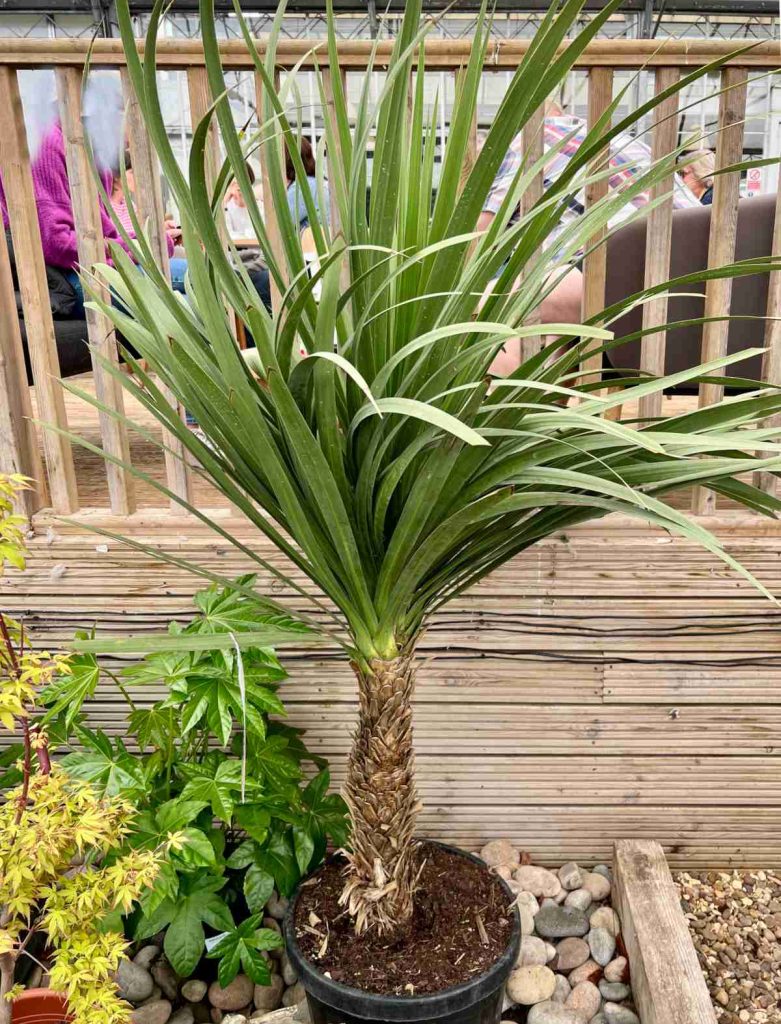
However, if you are looking at C. australis ‘Torbay Dazzler’ and C. ‘Pink Stripe’ and thinking, can you keep cordyline in pots? The answer is somehow yes and no. The Torbay dazzlers have recently flooded the market with their dramatic creme foliage but are essentially small trees. The pink stripe, too, falls in the junction of container-growable and open ground-growable.
These kinds of cordylines, when planted in large containers, work remarkably well as architectural potted plants. Their appearance, as well as growth habits, fit the bill to perfection. But some of the other varieties of cordylines that can be grown in containers are-
- Cordyline Southern Splendour– bold pink stripes and margins.
- Cordyline Red Star– upright habit, strong red colour.
- Cordyline Purple Tower– broad leaves heavily flushed plum-purple colour.
- Cordyline Coral– pastel pink foliage with green-brown stripes.
- Cordyline banksia Electric Pink– bright pink coloured margins to maroon coloured leaves.
How to Grow Cordyline in Pots
Getting your cordylines depends on whether the plant grows from seeds or cuttings. They do quite well in all forms, but the Cordyline australis perform well when they are grown from seeds. But the slow-growing plant will need yeats to take a big form. But the C. fruticosa and its varieties are often grown from propagation through cuttings.
The large and well-established cordylines often produce suckers, which are shoots that arise from the base of the plant. These are often used for propagation and can be taken quite easily with a sharp knife. Just take the cutting and plant it in a potting mixture that has compost mixed with grit, perlite, or vermiculite.
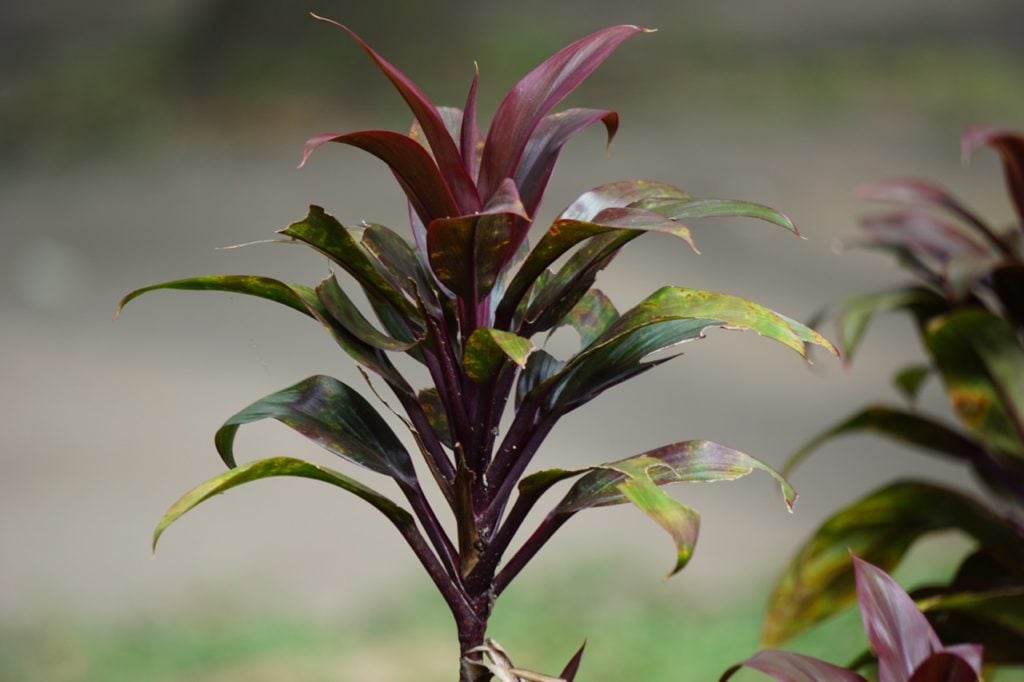
The most successful time to propagate is during late spring to mid-summer. It is then that you can think can you keep cordyline in pots? And keep the small shoot on your windowsill for it to grow. The warm weather will help the plant thrive within the container.
1. Choose the Right Container
According to the best Horticulturists, the first thing to consider while planting cordylines in containers is drainage. The right pot should have plenty of drainage holes, without which your plant will rot. However, normal ports with drainage holes will often not be able to drain out the water if kept on a flat surface. So, make sure your pot is contoured and removes the excess water effortlessly. You can also place your containers on pot feet.
When the thought is whether can you keep cordyline in pots, the answer lies in what kind of pot you are considering. Many people use terracotta pots for their aesthetic appeal, but those only have one hole for drainage. What you can do in case of blockage is to place curved objects, like broken roof tiles and curved crocks, underneath your pot.
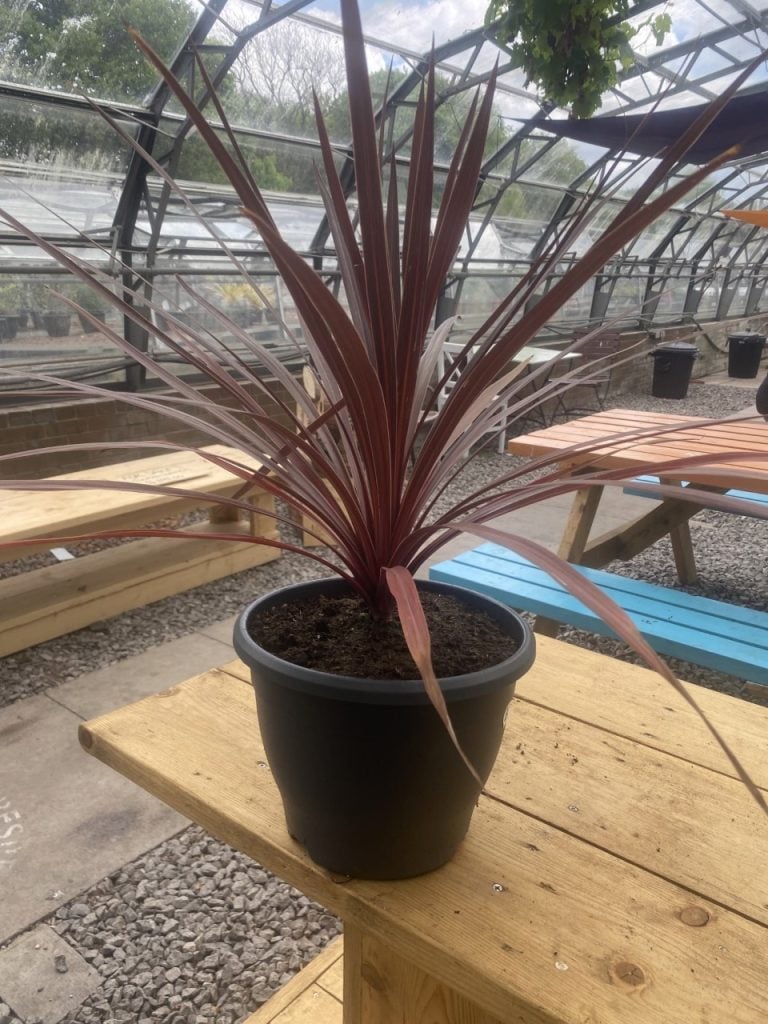
You also don’t need containers that are too big to plant cordyline in pots. If your pots appear to be too small, do not fret, for cordylines are slow growers. The shrub will do quite well in it for the time being and then shift when necessary.
A rule of thumb also dictates that the height of the container depends on how tall the variety grows. If it is about half the height of the plant above ground, you need not worry. If your cordyline spreads more or has a radial growth, take half the spread of its radius. As for the material, you can choose synthetic pots for their appeal only if all other factors are favorable. Otherwise, be safe and get some clay or terracotta ones.
2. Choose the Right Compost
Soil that is moist, well-drained, and, most importantly, moderately fertilized is necessary for cordylines to function. These shrubs also thrive if the soil is slightly acidic or neutral. If you are growing your cordylines in containers, you will need to prep the soil beforehand. The soil has to be a 50% mix of multipurpose compost with 50% horticultural grit to maintain the perfect balance.
If you are prepping it yourself, make sure the soil is loam-based mixed, along with some well-rotted manure and organic compost. As you water the soil regularly during the initial stages, you will need to make sure it doesn’t get too soggy. The buildup of harmful soils is also to be avoided, which can be done by washing the compost periodically. Making sure that the soil is well and full of grit or perlite also keeps the roots from rotting.
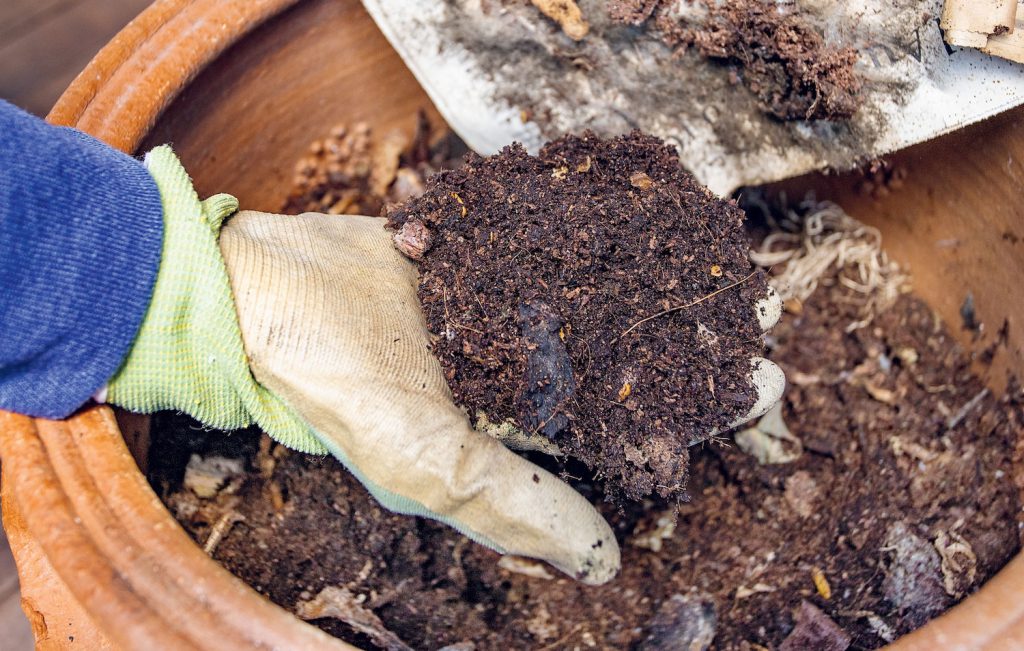
As the shrub grows up to attain its characteristic tree-like trunk, it exposes its base. The leaves will consequently start turning yellow and die off. Keeping an eye on the maturing tree is necessary as the leaves will need to be sheared off.
3. Grow Cordylines in Containers
Cordylines have a hardiness rating of H3, and they can stay alive till – 5 degrees Celsius. So a UK winter would be trouble for them. And when you consider whethercan you keep cordyline in pots, the temperature becomes no problem at all. You can simply move them indoors in case of a hard frost. In colder regions, moving them to a greenhouse or covering them with a horticultural fleece is the best option.
Green cordylines in containers also need to be placed under the full sun for optimum growth. The coloured variety of different species can do well in the shade. However, make sure the pot is in a sheltered location so that cold, harsh winds do not bother it.
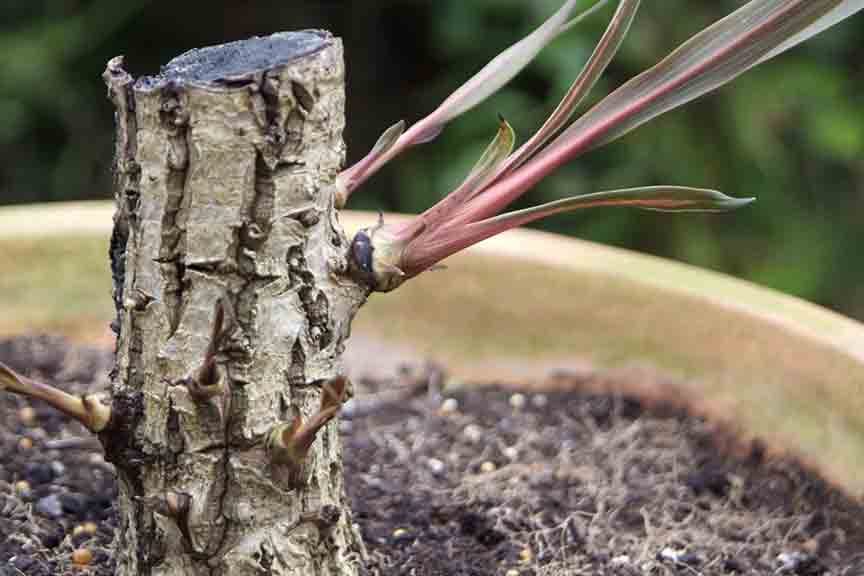
As these shrubs are slow growing, they do not need to be repotted frequently. Especially if you keep your cordylines indoors, they would grow even slower and take a long time before spilling over. Only repot when the plant has become too big, and its roots can be seen from the drainage hole. Every 2-3 years is usually a good time. You can also use a large container to avoid transplanting, a half-size wooden barrel being the best option. This might make relocation during winter an ordeal, but it will last you for a long time.
4. Potted Cordyline Care
Cordylines are hardy plants and therefore do not need much in terms of care. Just make sure that the plant has all the right conditions during planting, and it will take care of the rest. Watering is a concern as the amount depends on its stage of growth. It also depends on whether you store it indoors or outdoors, as well as the general climate.
If the question is about whether can you keep cordyline in pots while they are mature, you need not be concerned. Mature cordylines do not need too much water, even in containers. But the young growing plant prefers their soil moist.
If you keep your containers on your patio outdoors, they will need more amount of water than the indoor ones. These shrubs, like most plants, also need considerably more water during summer rather than winter. During times of doubt, just check the soil about 1 cm deep. If the soil is dry, water it till it becomes moist, but do not water it again till fully dry.
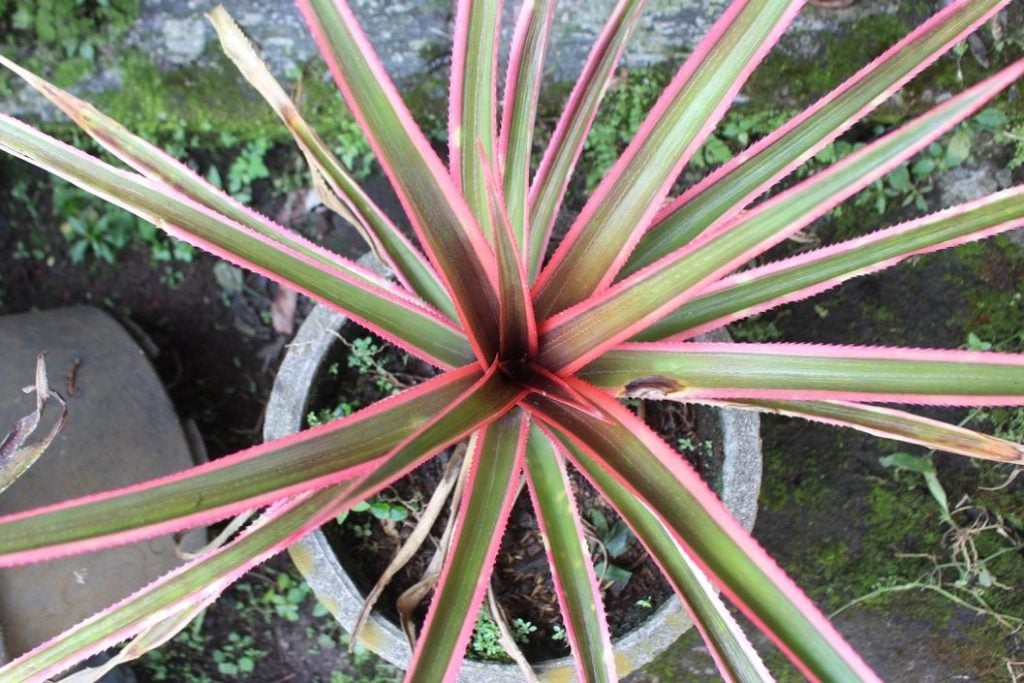
To promote its growth, you can also add a little fertilizer to your cordylines. The shrub prefers a balanced liquid fertilizer when it is bound in containers. The advice is to dilute the fertilizer to 60-70% and pour it away from the center of the plant.
5. Pests and Diseases
Cordylines are usually trouble-free, but some factors can damage your tree. The most basic of them is root rot which happens when the compost makes the base a little too wet. It also suffers during a long winter, as frost can disfigure its top, especially while it is growing. Thinking if can you keep cordyline in pots is a good idea as it prevents all of this. To spot this kind of physical damage, keep an eye out for spots on its leaves.
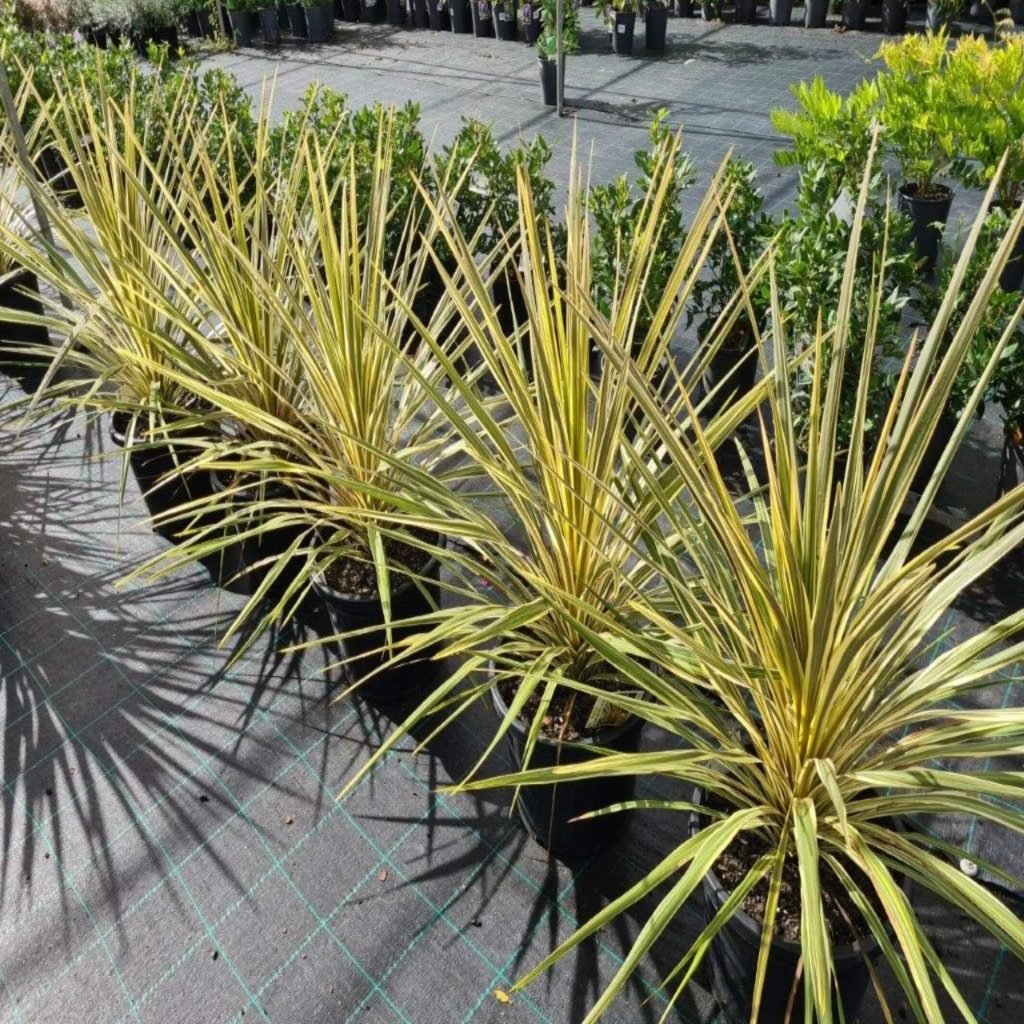
Poor growth is also a symbol of existing problems within the shrub. The foliage might turn yellow and brown or lose leaves excessively when external factors affect its growth. To take care of the plant, remove the dead parts like leaves and stem in the spring. You can tear away the leaves or cut them off from the trunk. New leaves will grow from the trunk, and your plant will soon become as good as new.
Bottom Line
There is no doubt that cordylines would give your house a wonderful look if they were planted in open ground. However, they look just as beautiful in pots on your patio and even indoors. You just have to plant them carefully in compost and water it regularly. Also, keep an eye on the drainage so that your plant doesn’t rot.
The right directions and care can answer your question about whether can you keep cordyline in pots successfully. The right knowledge would transform your garden. And if you want to know more about these gardening tips, comment in the box below.

